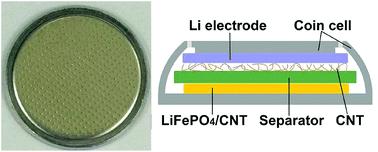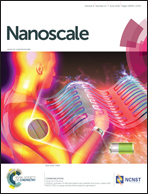The effect of the carbon nanotube buffer layer on the performance of a Li metal battery†
Abstract
Lithium (Li) metal is one of the most promising candidates as an anode for the next-generation energy storage systems because of its high specific capacity and lowest negative electrochemical potential. But the growth of Li dendrites limits the application of the Li metal battery. In this work, a type of modified Li metal battery with a carbon nanotube (CNT) buffer layer inserted between the separator and the Li metal electrode was reported. The electrochemical results show that the modified batteries have a much better rate capability and cycling performance than the conventional Li metal batteries. The mechanism study by electrochemical impedance spectroscopy reveals that the modified battery has a smaller charge transfer resistance and larger Li ion diffusion coefficient during the deposition process on the Li electrode than the conventional Li metal batteries. Symmetric battery tests show that the interfacial behavior of the Li metal electrode with the buffer layer is more stable than the naked Li metal electrode. The morphological characterization of the CNT buffer layer and Li metal lamina reveals that the CNT buffer layer has restrained the growth of Li dendrites. The CNT buffer layer has great potential to solve the safety problem of the Li metal battery.


 Please wait while we load your content...
Please wait while we load your content...